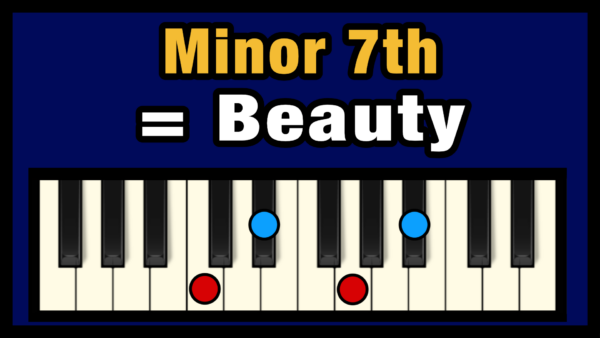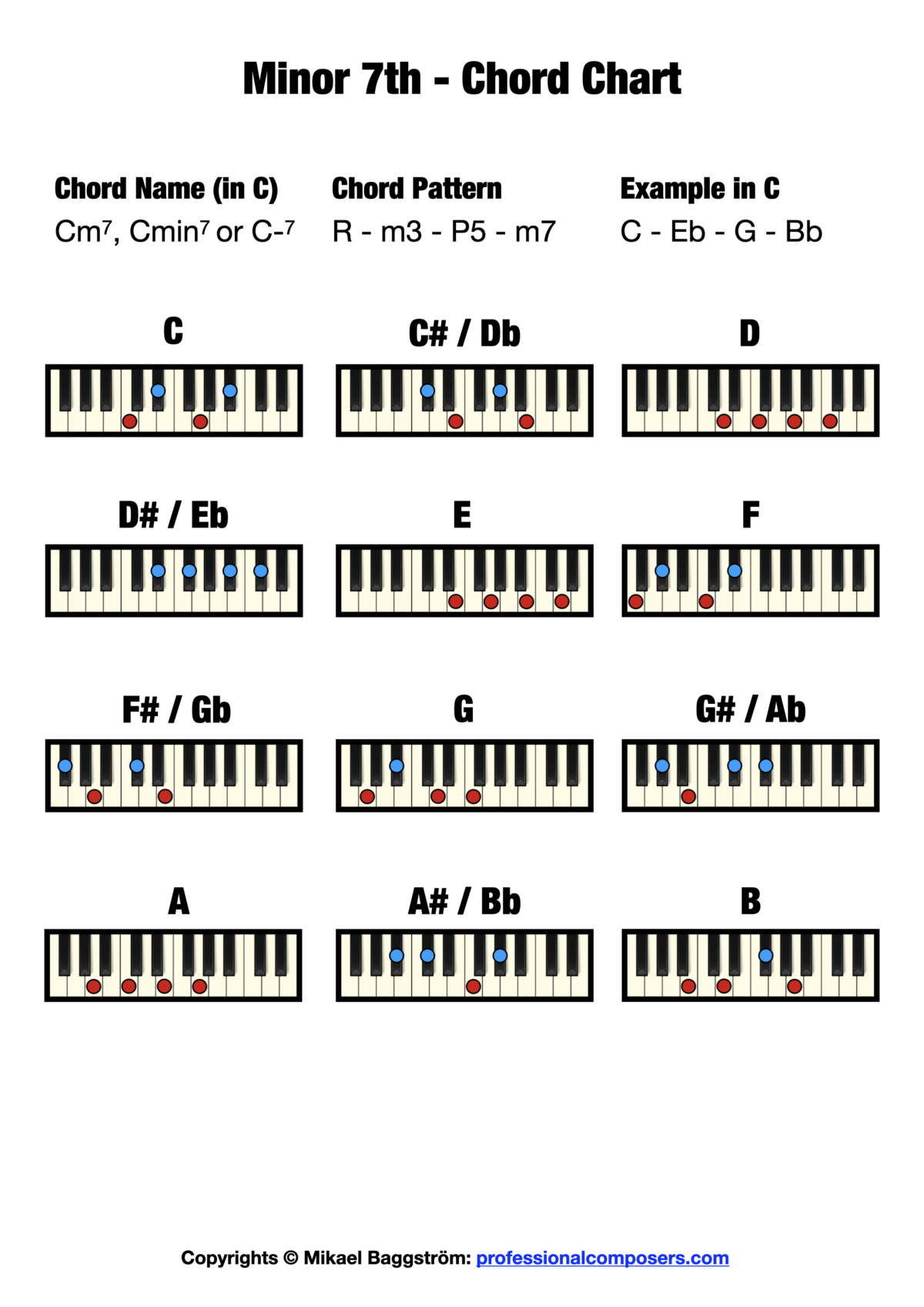 Why do minor 7th chords have such a beautiful and rich sound?
Why do minor 7th chords have such a beautiful and rich sound?
While a standard minor triad does indeed sound emotional and sad, it also sounds lonely due to the simple harmony.
Adding another minor harmony to the minor triad, in this case a minor 7th, will make the chord sound richer, elegant and less lonely.
It will also somehow make it less sad, because you can see a minor 7th chord as a major triad chord played a minor 3rd above the root note.
For example, a C minor 7th chord is made from the notes “C, Eb, G, Bb”. But if you skip the root note C, the remaining notes make up an Eb Major triad chord.
In fact, it’s quite common to play a 7th chord by skipping the chord root note on your right hand on piano, and playing the root in octaves with your left hand, like this:

Another interesting perspective on how you can look at a minor 7th chord, is the symmetry of the perfect 5 harmonies. Let’s take C minor 7th as an example again. You can look at it as a C power chord “C + G” with another power chord stacked a minor 3rd above it: an Eb power chord (Eb + Bb) in this case.
How to Play a Minor 7th Chord?
Let’s use the standard root position of the chord to make it easy. Here’s the chord formula for a minor 7th chord.
- Root Note of the Chord
- Minor 3rd from the Root
- Perfect 5th from the Root
- Minor 7th from the Root
You can show this chord formula by simply using the standard abbreviations for intervals in music:
- R – m3 – P5 – m7
How to notate a Minor 7th Chord?
The 3 most common ways to notate a minor 7th chord are: m7, min7 and -7. It is also traditional to write the “7” as superscript (meaning a small character to the upper right of the name). Let’s say you want to notate a G Minor 7th Chord, here’s how it often is written:
- Cm7
- Cmin7
- C-7
Minor 7th – Piano Chord Chart
Here’s a complete chord chart on piano for all minor 7th chords. Download it for free, print it out, or simply bookmark this web page for reference.


